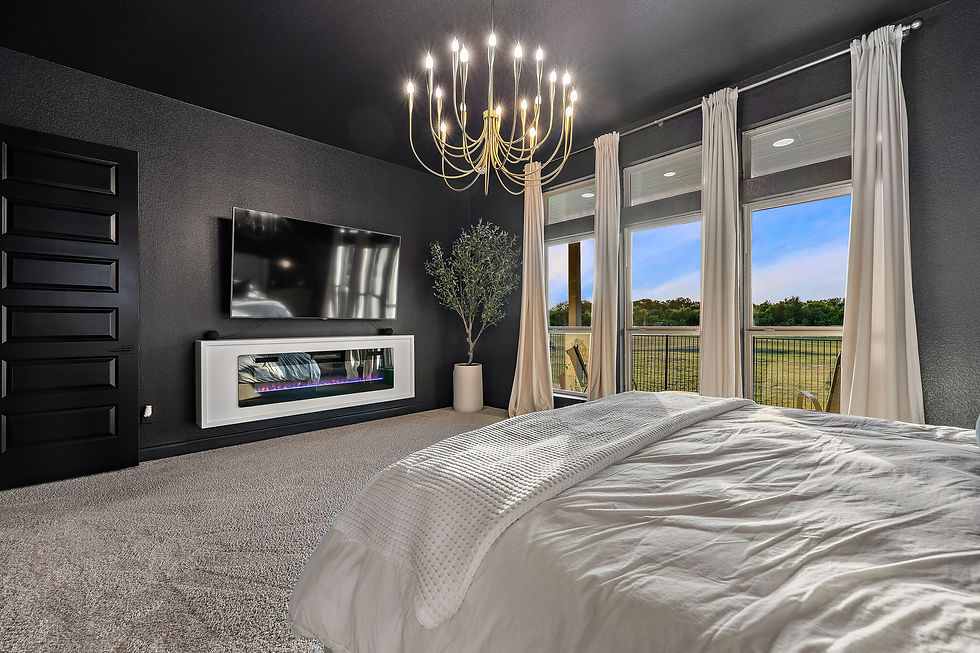Designing for Two (or More): When Style Isn’t Shared
- chrisandallidesign
- Jul 10
- 3 min read

Designing a home can be challenging — not just because of budgets, timelines, or supply chains — but because the people who live in that home often have very different ideas about what makes a space beautiful.
One person may love warm brass and earthy boho textiles, while the other prefers the clean lines of industrial finishes and cooler tones like nickel. One may dream of texture-rich walls with Venetian plaster or limewash, while the other just wants smooth surfaces for sharp trim and traditional moldings. It happens more often than you think — and yes, it happened to us.
At Chris and Alli, we believe design isn’t about choosing one style over another. It’s about finding the harmony that exists between styles — and making sure every voice in the home is reflected in the final result.
Sometimes that harmony comes easily. Other times, it takes negotiation, creativity, and yes — even some strategic demolition. You might hear people say things like:
“Wait, your home is modern — why are you trying to decorate it like a cottage?”
To that we say: Because it’s ours.And because that modern cottage blend might be the exact thing that makes you feel at peace when you walk through your door.
The truth is, you don’t need to label your home to love it. You don’t need permission to blend styles. You just need a plan — and a willingness to layer, shift, and combine what matters to each person living under the same roof.
Designing with different perspectives doesn’t mean compromising beauty — it means crafting something richer, more personal, and more real. That’s where the good stuff lives.
Same Fixtures, Different Flavor
One of the simplest — and most effective — ways to design a home with different tastes in mind is to use the same fixture style across rooms, but customize the finish, bulb tone, or placement to reflect individual preferences.
Let’s say you and your partner agree on the shape of a sconce or the silhouette of a chandelier — great. That’s your foundation. From there, you can easily tailor the look:
Brass in the bedroom, black in the office, nickel in the bathroom.Same fixture family, different finish — keeping cohesion across the home while giving each space its own personality.
Warm bulbs in one room, cool white in another.A warm Edison bulb can turn a sleek industrial light into something moody and vintage. Meanwhile, a clean, cool bulb in the same fixture leans modern and fresh.
Wall vs. ceiling mounting.Install a fixture horizontally in one space and vertically in another. Or hang it lower for a more dramatic dining look and higher in a hallway for a lighter touch.
This approach is all about visual continuity with personal flexibility. You’re honoring the home’s overall rhythm while giving each person their own room to shine — literally.
Below is an example of six uniquely created spudnik light fixtures to fit 6 different moods.
Designing Together, Differently
At the end of the day, designing a home with multiple perspectives isn’t about winning or compromising — it’s about collaborating. It’s about sitting down as a family, talking through what each person loves, and finding pieces that speak to all of you — even if they don’t say the exact same thing.
That might mean choosing similar decor pieces in different finishes, or one fixture style in a few different colors, or blending textures and tones to reflect the personality of each space. These small, thoughtful shifts are what help create a home that feels cohesive — but still uniquely yours.
Because good design isn’t about matching everything. It’s about making room for everyone.
We’d Love to Hear From You
Have you had to blend different styles in your own home? Did you and your partner (or family) have totally opposite tastes — and somehow make it work?
Share your experience with us in the comments below or tag us on social — we love seeing how others create homes that reflect everyone who lives in them.
Because at the end of the day, design isn’t just about style.It’s about story — and we’d love to hear yours.


















Comments